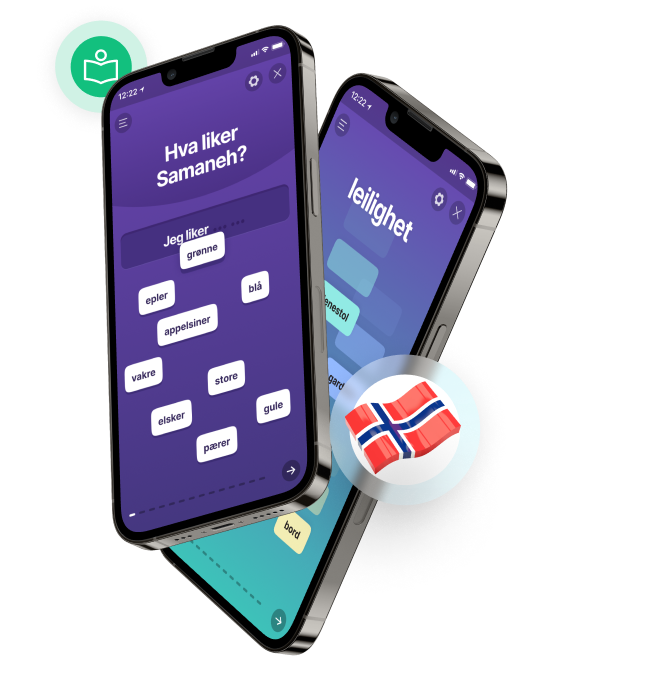The mystery of Norwegian word classes - solved!
Tor is investigating the basic building blocks of Norwegian grammar. It’s VERY useful to know what they are! To some of you this stuff can seem a bit dry.

Think you know all the answers already? - I bet you you don’t!
The official rules!
Språkrådet (The Norwegian Language Council) keeps an eye on the development of the Norwegian language, reporting to the government and recommending new rules and changes - all the time, it seems...
Språkrådet’s Official List of Word Classes
INTERJEKSJONER (interjections)
I mention interjections first, because they’re the most fun! Greetings, exclamations, short answers and sometimes just sounds belong here, for example:
Hei Hurra Å Jammen Huff Hmmmmm...
Now for the other nine:
SUBSTANTIVER (nouns)
These are names of persons, things, concepts and phenomena, for example:
Tor mann bok speilbilde Bergen
PRONOMENER (pronouns)
These are word we can use instead of a noun (like “shorthand”, almost). “Personlige pronomen” include
jeg du han hun det den vi dere de man
“Spørrepronomen” include
hvem hva hvor hvorfor hvilken
ADJEKTIVER (adjectives)
They describe other words, like nouns and pronouns; with colour, quality and also numbers:
himmelblå vakker interessant plagsom første, annen(andre), tredje
DETERMINATIVER (determinatives)
These somehow point to, define or decide other words:
“Demonstrativer” (demonstratives)
denne, dette, disse, det, den, de
“Possessiver “ (possessives)
mitt og ditt”, “hans og hennes”, sin, deres
“Kvantorer” (quantors) have two subcategories:
1. Artikler (articles)
en, ei, et
Just like Pluto is no longer a planet because some scientists decided so, Språkrådet recently demoted the articles from being a word class of their own!
Hmmmm…
(that was an interjection, by the way...)
2. Grunntall (cardinal numbers)
en, to, tre femhundreogsekstitrillionersyvhundreogåttifemmilliarderfirehundreogattenmillionernihundreogsekstentusenåttehundreogto
“Mengdeord” (quantifiers)
mange mye begge hver samtlige
“Forsterkere” (amplifiers)
They make a point ring through a little stronger (but not louder!). For example:
Dine egne penger selv et barn kan da forstå at …
PREPOSISJONER (prepositions)
Prepositions describe a relationship between one word and another. Simply place a preposition in front of a noun or pronoun, and Voila! -you have created a prepositional phrase! Do you know these?
på kontoret i kjelleren til bestemor fra Afrika
Because so many prepositional phrases are unique to Norwegian, you’ll want to be constantly learning new ones.
VERB (verbs)
Verbs define actions:
å elske jeg sprang Tor speiler seg Yngvil har sagt
Without time there can be no action. All verbs appear in a lot of different “time zones”, like past, present and future. More on that topic in another post.
ADVERB (adverbs)
These give us more clues about the action (i.e. the verb), in the same way as adjectives describe nouns and pronouns.
da når ofte sjelden ned langsomt fortsatt aldri
KONJUNKSJONER (conjunctions)
These are kinda like zip ties; they link two words, phrases or sentences together. The most common ones:
og men for eller så
SUBJUNKSJONER (subjunctions)
Also zip ties, but come between clauses with different “status” within a sentence:
mens fordi hvis da når
These words precede subordinate clauses. Språkrådet decided that the infinitive marker Å should also be called a subjunction!
That’s a pretty long word to explain a pretty short word if you ask me...
Now you’re either totally exhausted and confused or dying to know more...
Don’t worry, Lingu will keep posting new articles like this on grammar, pronounciation and more.
Read Norskbloggen every week, and Norwegian grammar will become less of a mystery - one week at a time….
Чи хотіли б ви більше вивчати норвезьку?
Зареєструйтеся сьогодні та вивчіть норвезьку за допомогою нашого ігрового онлайн-курсу «Samanehs reise» від початкового рівня до вільного мовця!
Від 375 NOK per måned



